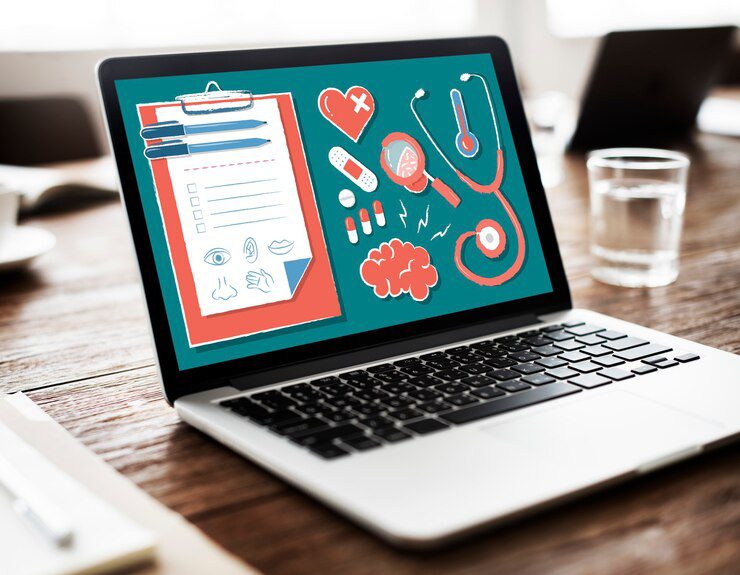Introduction
What is medical coding?
Medical coding and billing is the process of obtaining information regarding a patient’s medical care—such as diagnosis, treatment, necessary medical equipment, and medical services—from medical records. The medical coder transforms this data into universal medical alphanumeric codes.
To preserve correct medical records, a medical coder converts information from a patient’s medical records, including notes, lab results, treatments, and diagnoses, into universal Coding for medical professionals. These standardized codes are used by insurance companies and healthcare providers for billing and record-keeping purposes. This administrative role is important within the on-demand healthcare industry.
Types
There are three types of commonly known medical alphanumeric codes
International Classification of Diseases (ICD)
The World Health Organization (WHO) created this internationally used code. The classification system is largely used for health record and data collection purposes, among other things.
Current Procedural Terminology (CPT):
CPT the US, medical, surgical, and diagnostic services and procedures are identified with PT codes. This three-category system was devised by the American Medical Association (AMA): procedures and current medical practices, clinical laboratories, and new technologies.
Healthcare Common Procedure Coding (HPCCS):
The Centers for Medicare and Medicaid Services (CMS)
developed this codind and billing system to help process insurance claims for Medicare or other providers. Coders
use them to record medical procedures, products, supplies, and services.
Uses
Coding for medical professionals is primarily used to ensure medical billing and proper payment and claims processing by
insurance carriers, but the system is also valuable for research purposes and maintaining basic medical
records for patients. Each code tells insurers, researchers and healthcare providers the exact diagnosis, procedure and/or
medical service provided.
Responsibility of the medical coder:
Ensuring the correctness of the medical records you transcribe and the codes you use is one of a medical coder’s main duties. Other medical coder job requirements include knowledge of various Coding for medical professionals and adherence to the medical coding and billing code of ethics.
Some of the daily responsibilities of medical coding and billing jobs include:
- Some of the daily responsibilities of medical coding and billing jobs include:
- Transcription of patient information into appropriate Coding for medical professionals
- Conducting chart audits
- Collecting, researching and archiving medical information about patients
- Ensuring that all documents are grammatically correct
- Adherence to medical coding and billing guidelines and policies
Medical Coding Vs. medical billing
Medical billing deals with the financial exchanges between insurance companies and healthcare providers; medical coding does not. A medical biller is responsible for processing insurance claims, generating bills, and managing balances and payments for healthcare providers.
Medical coding, on the other hand, only retrieves billing information and details from the patient record to convert them into medical coding. So even though both professions deal with medical documentation, they are actually completely different jobs.
Medical coding and billing Salary
A medical coder working in the US earns an average of $46,660 per year or $22.43 per hour [1]. This
salary average includes all medical records and health information specialists, so it’s possible that you
could earn more than this average, depending on where you work, the certifications you hold, your level
of professional experience, and hours worked and/or shifts.
Job prospects
Medical coders are quite in demand. The BLS also predicts an additional
12,300 jobs will be added between 2021 and 2031.
kills the needy
Insurance companies, healthcare providers and patients all rely on the accuracy of medical records.
Attention to detail is therefore a must, as is knowledge of the coding and billing systems you will be using in your
particular healthcare facility.
If you want to become a medical coder, consider these key skills:
- Attention to detail
- Organization of time
- High ethical standards
- Organizational skills
- Patience
- Strong communication skills
- Knowledge of or ability to quickly learn software system
Education requirements
You don’t need any previous medical coding and billing experience to become a medical coder; however, many
certificate programs require at least one year of professional experience. If you need to gain
professional experience before certification, consider applying for positions such as a billing assistant to
gain first-hand insight into the medical coding and billing process.
Certification
Medical coding and billing certification is a credential in healthcare coding and billing. It shows that you have
learned a specific medical coding and billing system or systems, along with the basics of how to translate a patient’s medical data into codes. If you decide to get medical coding and billing certification, you have many options. You can get a general coding and billing certificate or a special medical coding and billing certificate. You can also choose to stack multiple certifications. The most important thing to remember is to choose an accredited program such as the Practice Management Institute (PMI), the American Health Information Management Association (AHIMA), or the American Academy of Professional Coders (AAPC). Each of these accredited organizations has its own set of certifications, each with variations in the medical coding and billing system taught and application (ie, type of medical facility). You can earn general coding and billing certifications, such as the Certified Medical Coder (CMC) or Certified Professional Coder (CPC-A) certification, or specialty coding and billing certifications, such as urology or pediatric care. The certification you choose can help you achieve your ideal career path.

Optional Certification
Although certification is optional in many cases, a study conducted by the American Academy of
Professional Coders (AAPC) found that certified medical coders earn 27 percent more than non-certified
medical coders .You can complete the certification program at any time during your medical coding and billing career. Some people earn a certificate to get a job in medical coding and billing , while others earn certificates after completing an associate’s degree. Some people get a bachelor’s degree, but it’s usually not a requirement. Each
employer will have their own specific training requirements.
How to become a medical coder?
Getting started with medical coding and billing requires the following steps:
1. Meet the basic prerequisites
The basic prerequisites for getting a medical coding job are to complete medical coding training. This
can be done through an associate degree program in medical coding, a medical coding certificate from
an accredited organization, or in-house employer training. You will need a high school diploma or GED to
qualify for the training.
2. Complete medical coding training
If you decide to earn an associate degree in medical coding, look for a reputable program offered at a
community college or vocational school. There are in-person and online options.
If you’d rather get certified in medical coding, think about where you’d like to work. Then try to gain
professional experience in that particular healthcare field, as many certification programs require some
prior medical coding experience and/or an associate’s degree.
Get medical coding certification
You can earn your medical coding certification after completing an associate degree in medical coding or
without any degree. Entry-level certifications can help you get a medical coding job. You can earn
specialty medical coding certifications at any point in your medical coding career. A complete list of all
medical coding certifications is available through the three major national accrediting organizations:
PMI, AHIMA, or AAPC. Most certification programs include a final exam that you must pass in order to
receive your certificate.
Brush up on medical coding skills
Once you’ve completed your training or medical coding certification, take the time to brush up on the
most important skills you’ll need as a medical coder. For example, you can enroll in a course in medical
software or reimbursement models like those offered on Coursera. You can also request additional
training materials from your employer specific to their needs as a healthcare provider.
Look for employment
When it comes time to hunt for a job, think about your skills and the sectors of the healthcare
industry you are interested in working in. Do you have a particular area of interest, like
pediatrics? In order to have some knowledge in the working world, would you like to begin by
applying for employment in your field? Jobs coding medical data remotely could also be of
interest to you.
How long does it take to become a medical coder?
It takes roughly two years to become a medical coder if you decide to pursue an associate degree.
It can take nine to twenty months to become a medical coder if you decide to enroll in a
certification program.
Medical coding is the transformation of medical diagnosis, procedures, medical services and equipment
into universal medical alphanumeric codes. Diagnoses and procedure codes are taken from medical
record documentation, such as transcription of medical notes, laboratory and radiology results, etc.
Medical coding professionals help ensure that codes are correctly applied during the healthcare billing
process, which involves abstracting information from records, assignment of relevant codes and
creation of claim for payment by insurance carriers.
Medical coding happens every time you visit a healthcare provider. The health care provider will review
your complaint and medical history, make an expert assessment of what is wrong and how to treat you,
and document your visit. This documentation is not just an ongoing record of the patient, it is how the
healthcare provider is paid.

Medical coders convert documentation into standardized codes that communicate the following to payers:
- Patient diagnosis
- The medical necessity of the treatment, services, or supplies that the patient received
- Treatment, services and supplies provided to the patient
Why is medical coding needed?
Why is medical coding needed?Any unusual circumstances or medical condition that affected these treatments and services
Like a musician who interprets written music and uses his instrument to produce what is intended,
medical coding requires the ability to understand the anatomy, physiology, and details of services and
payer rules and regulations to succeed.
Medical coding requires special discipline. Medical coders are considered part of the medical team and
often work very closely with providers, management and payers. Scholar, detective, educator and
problem solver, the medical coder has special skills.
A medical coder and biller process a variety of services and claims on a daily basis. Medical codes must
tell the full story of a patient’s encounter with a physician and be as specific as possible in capturing
reimbursement for services provided.
The primary role of a medical coder is to review clinical statements and assign standard codes using the
CPT®, ICD-10-CM, and HCPCS Level II classification systems. Health billers, on the other hand, process
and resolve requests sent to health insurance companies for payment of services provided by a health
care provider.
The medical coder and medical biller may be the same person, or they may work together to ensure
proper payment of invoices. To support a smooth coding and billing process, the coder will review the
patient’s medical records (ie, transcription of medical notes, lab tests ordered, imaging studies
requested, and other resources) to verify the work performed. The two work together to avoid
insurance being denied payment.
Why is medical coding needed?
The health care revenue stream is based on the documentation of what has been found, decided and
done.
The patient’s diagnosis, test results, and treatment must be documented, not only for reimbursement
purposes, but also to ensure high quality care at future visits. Personal information about a patient’s
health follows them through follow-up complaints and treatment and must be easy to understand. This
is especially important given the hundreds of millions of visits, procedures, and hospitalizations annually
in the United States.
But the problem is that there are thousands of conditions, diseases, injuries and causes of death. There
are also thousands of services provided by providers and an equal number of injectable drugs and
supplies to keep track of. Medical coding classifies them for easier reporting and tracking.
And in healthcare, there are multiple descriptions, acronyms, names, and eponyms for every disease,
procedure, and tool. Medical coding standardizes the language and presentation of all these elements
so that they are easier to understand, track and edit.
Mandated by the Health Information Portability and Accountability Act (HIPAA), this common language
allows hospitals, providers and payers to communicate easily and consistently. Almost all private health
information is stored digitally and rests on assigned codes





